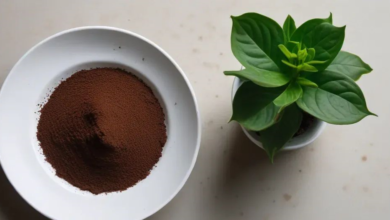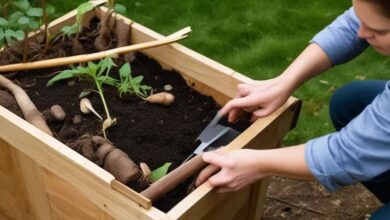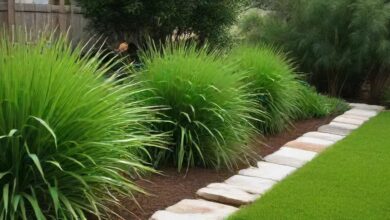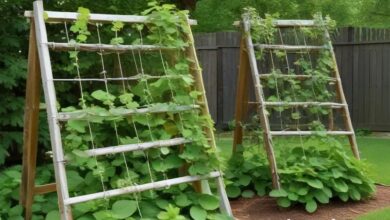How to Prepare Garden Soil for Planting
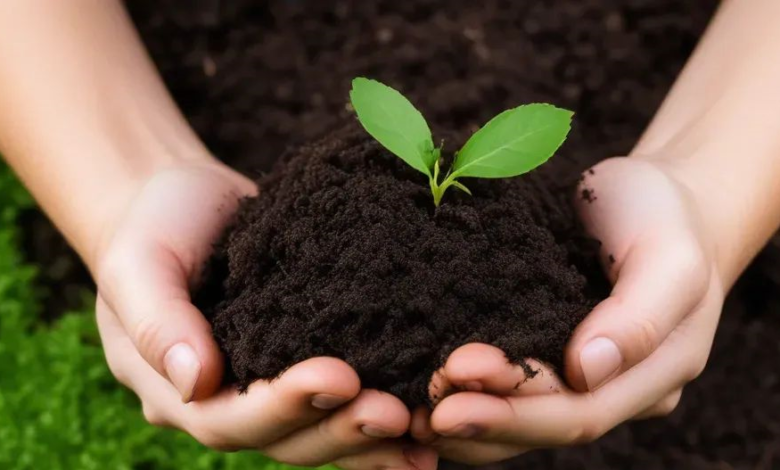
How to Prepare Garden Soil
| Step | Details |
|---|---|
| Clear the Area | Remove debris, weeds, and rocks; ensures a clean planting bed and reduces competition for resources. |
| Test the Soil | Check pH and nutrient levels; use kits or send samples to labs for analysis; guides amendments and fertilizers. |
| Amend the Soil | Add compost, aged manure, and peat moss to improve fertility, texture, and microbial activity. |
| Adjust pH | Use lime to raise pH or sulfur to lower it; ensures optimal nutrient availability for plants. |
| Loosen the Soil | Use a fork or tiller to break up compacted soil; improves root penetration, water, and nutrient flow. |
| Mulch the Soil | Apply straw, wood chips, or shredded leaves; retains moisture, controls weeds, and regulates temperature. |
| Water the Soil | Water thoroughly before planting; ensures good soil-to-seed contact and reduces drought stress. |
| Consider Raised Beds | Improves soil quality and drainage; easier to manage and prevents soil compaction. |
| Plan Your Planting Layout | Arrange plants by size and growth habits; use companion planting and optimize space for better yields. |
Clear the Area
Gardeners must prepare the soil before planting. This technique has numerous crucial components that optimize plant development and output. Debris, weeds, and pebbles must be removed before preparing the garden soil. This initial cleaning creates a clean planting bed and eliminates unwanted plant competition for resources. After clearing the soil, evaluate its quality and content. Texture, structure, and nutrients affect soil quality. A soil test can detect pH and nutrient levels, helping you choose amendments and fertilizers. Garden centers sell soil testing kits that reveal your soil’s needs.
According to the soil test, you may need to improve texture and fertility. Organic matter, compost, and aged manure promote soil moisture and nutrient retention. Nutrient cycling and soil health require soil microbial activity, which organic matter enhances. After adding additions, mix the soil to ensure equal dispersion. Mix the amendments into the first few inches of soil with a garden fork or tiller without overworking it. Crumbled, friable, loose, and well-aerated soil lets plant roots absorb nutrients. Soil structure, fertility, and drainage are essential. Waterlogging and root rot can result from poorly drained soil, whereas drought stress from sandy soil can occur. To boost plants above poorly drained soil, add compost or peat moss, or build raised beds or mounds. Mulch the garden bed before planting.
Mulch retains moisture, inhibits weeds, and adjusts soil temperature, boosting plant growth. Straw, wood chips, and shredded leaves decompose and enrich soil. The next step is to prepare the planting area by establishing rows or beds and spacing plants in accordance with their mature size and the development tendencies they exhibit. To optimize the area and deter pests, use companion planting and encourage vining or sprawling plants. Following these procedures to prepare your garden soil will provide a healthy, productive environment for strong plant growth and numerous harvests.
Test the Soil

Check soil quality and composition before planting. This stage is ideal for soil pH, nutrition, and health studies to promote plant growth and yield. Gardeners test soil nitrogen, phosphorus, and potassium. Plant health and nutrient availability depend on the pH of the soil. Adjust the soil pH to grow acidic, neutral, or alkaline plants.
Garden centres sell lab or DIY soil testing kits. DIY kits require soil samples from different garden zones, thorough mixing, and reagent or probe testing. Gardeners can send soil samples to labs for nutrition, texture, and organic matter testing. All soil testing methods help gardeners understand and plan amendments and fertilizations. Gardeners use soil testing to choose fertility, structure, and drainage additions. Compost, aged manure, and peat moss boost soil microbes.
These additives improve soil texture, nutrient retention, and plant fertility. Soil testing reduces runoff, fertilizer, and pollutants. Finally, garden soil preparation and management require testing. Gardeners may choose fertilizers, plants, and soil for healthier plants and more harvests by understanding soil qualities.
Amend the Soil
To encourage plant development, garden soil must be amended. Compost, aged manure, and peat moss improve soil fertility, texture, and microbial activity. Plant roots enjoy these soil moisture and nutrient retention additives. Organic matter increases soil structure, making it more friable and easier for plants to build strong roots. For plant growth and abundant harvests, soil amendment is necessary before planting.
Adjust pH
Garden soil pH must be regulated before planting to ensure plant nutrient availability. The pH of the soil affects plant growth and yield. Plants thrive in soil between 6.0 and 7.0; however, certain species need a higher pH. Gardeners can raise pH using lime and lower pH with elemental sulfur in acidic and alkaline soil, respectively. Gardeners may enhance nutrient intake and encourage healthy plant growth by maintaining soil pH. Gardening requires soil pH adjustment before planting to promote strong growth and many crops.

Loosen the Soil
Garden beds need loose soil for best plant development and production. Breaking up compacted soil helps roots. Foot traffic, heavy machinery, and weather compact soil, reducing water, air, and nutrient circulation and root extension. Gardeners can fork, tiller, or broadfork compacted soil to improve structure and texture.
These tools break clumps to create loose, friable soil for root penetration and exploration. Waterlogging can cause root suffocation and sickness; thus, loosening the soil lets water in. Besides improving soil structure, loosening soil helps roots absorb nutrients.
Compacted soil limits water and nutrient flow, starving plant roots. Gardens remove soil to let water and nutrients flow to plant roots. Slowing and stabilizing soil flow reduces erosion. Rainwater transports soil particles over compacted soil, causing erosion. Water absorption improves with soil loosening, reducing runoff and erosion and saving fertility. Preplanting loose soil encourages root growth, nutrient absorption, and erosion prevention. Before planting, gardeners should loosen the soil for healthy plants and large harvests.
Mulch the Soil
Mulching before planting improves plant health and yield. Mulch helps gardeners control weeds, soil temperature, and structure. Mulch retains moisture and nutrients, preventing evaporation and weed competition. Mulch promotes root growth and microbial activity by cooling summer and warming winter. Mulch increases the fertility and health of the soil by breaking down organic matter. To grow healthy plants and crops, gardeners mulch soil before planting.

Water the Soil
Before planting, water garden beds to ensure healthy plant growth and successful cultivation. Hydrate the soil before planting to help seeds and seedlings build strong roots. This decreases plant stress in drought-stricken areas, making it essential. Watering before planting settles the soil and improves seed-to-soil contact for germination. To hydrate the root zone and planting area, water the soil uniformly and thoroughly. Avoid overwatering since it hinders root growth and increases fungal illnesses. Gardeners carefully moisten the soil before planting for maximum plant development and harvests.
Consider Raised Beds
Raised beds improve plant growth and gardening performance by preparing soil. Raised beds can be filled with a bespoke soil, compost, and other amendment mix to satisfy plant needs, enhancing soil quality and composition. Raised beds reduce waterlogging and root rot by draining. Higher raised beds are easier to plant, irrigate, and harvest. Raised beds prevent soil compaction since gardeners can avoid walking on them. This promotes healthy root growth and oxygen supply. Raised bed borders prevent weeds and define planting areas and pathways, increasing garden organization. Raise beds and prepare garden soil strategically, improving gardening success, plant health, and yield.

Plan your Planting Layout
Planning your planting scheme is essential for soil preparation and garden development. A well-planned planting design utilizes space, sunlight, water, and fertilizer for plant health and output. Space plants by height, spread, and growth to avoid overcrowding. By companion planting plants with similar water and nutrient needs, watering and fertilization are simplified, and pest management and soil health are promoted. Use appealing designs, interplanting, and succession planting to extend the harvest season. Planning your planting pattern increases garden space and plant growth, making gardening more enjoyable and productive.

